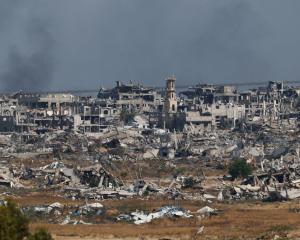
Everyone froze as the knife skittered across the polished cement floor in the PE locker room of the struggling intermediate school where I worked as a restorative justice co-ordinator in Denver, Colorado.
It had flown out of David’s (not his real name) trousers as he changed after class. "A shanker [blade]", someone exclaimed as the other pupils quickly left the room.
With David and I alone in the room, he sat down and quietly started sobbing in anticipation of being expelled from school. His crafted facade as a toughie dissolved into the reality of a boy fearful for his future outside of school, one of the few places he received support and care.
Those fears were not unfounded, as it was tragically common to hear news of young Davids succumbing to the street violence afflicting our neighbourhood.
Having spent over 20 years supporting and promoting non-violent approaches to conflict – particularly in schools – I have learned that before, during and after any eruption of violence, are a variety of personal fears, social pressures, and unmet human needs.
The death of Enere Taana-McLaren is no exception. So far, responses have highlighted the long-standing safety concerns of pupils at the Dunedin bus hub. Another issue that the court order of name suppression has struggled to tamp down has been the sharing of the alleged attacker’s image and information.
These highlight the all-too-natural tendency to blame and shame in the aftermath of violence. While the justice system is crucial for ensuring community safety and accountability, the circumstances mentioned also reveal the limitations of courts and police.
Fortunately, informal and complementary efforts have already begun, such as a haka and blessing done at the ad hoc memorial, as well as when Enere’s body was returned to Dunedin. These public expressions of collective sorrow, cleansing, and solidarity help people persevere in the face of struggle.
The religious and cultural communities which many in the community are members of also provide social support and spiritual fortitude for making sense of what happened.
At another level, communication between the schools where the pupils were enrolled to prevent knock-on conflicts has been significant and needs to be sustained and scaled up as part of a multi-school dialogue.
Meaningful pupil leadership, where youth are included as experts in their own lives acknowledges that community safety is not just a bus hub issue, but an aspect of constructive communication in wider online and offline spaces in Dunedin.
In sum, addressing the bus hub attack and its social and personal ripple effects requires the people of Dunedin to consider creative forms of restorative communication, layered responsibility, and cultural action. This means acknowledging our community has lost many futures to the attack.
First and foremost is the victim and his family, their school community, and other circles of relationship. As well, having compassion for the young person responsible for the attack, their lost future, and that of their family, is encouraged by spiritual and cultural values.
Efforts going forward should build on community-based dialogues already begun where young people and adults contribute their everyday expertise in identifying needs, repairing harms, and preventing future violence, both now and in the years to come.
— Jeremy Simons is a senior Research Fellow at the Centre for Restorative Practice at Victoria University of Wellington and an honorary senior Research Fellow at the University of Otago.












